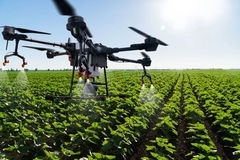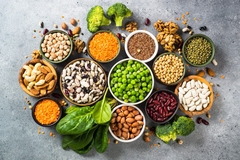Resilient Florida Growers Produce Adequate Crop
The 2007-2008 crop estimate, released by the U.S. Department of Agriculture indicates Florida will produce 168 million boxes of oranges, 25 million boxes of grapefruit and 5.1 million boxes of tangerines.

16/10/07 Florida's orange crop will increase by 30 percent this year as the state's citrus growing regions continue to rebound from recent hurricane-related losses. As a result, consumers in the U.S. and overseas will benefit from an increased supply of high-quality Florida orange juice.
The 2007-2008 crop estimate, released by the U.S. Department of Agriculture indicates Florida will produce 168 million boxes of oranges, 25 million boxes of grapefruit and 5.1 million boxes of tangerines. The figures for oranges and tangerines increased and grapefruit production is down slightly from last year. This year's crop levels will elevate orange juice production by 27 percent, while grapefruit juice decreases by 16 percent.
"We're devoted to continually growing demand for Florida citrus," said Ken Keck, executive director for Florida Department of Citrus (FDOC). "This year, we've planned an effective mix of television, internet, and magazine advertising, public relations, and retail and foodservice communications programs to remind consumers about the great benefits of Florida citrus products. As the consumer focus on health-oriented, natural foods deepens, retailers will be motivated to promote traffic-building products such as orange and grapefruit juice and fresh Florida citrus fruits."
"Inventories of Florida orange juice are at historically low levels, reducing the likelihood of any impact on prices," said Bob Norberg, FDOC's deputy executive director for research and operations. "Prices are determined by a number of factors beyond the cost of raw materials, such as energy and labor costs. For consumers, orange juice continues to be a tremendous value. It's one of the most naturally nutrient-rich beverages on the market."
Florida has experienced a rebound in crop production affected by storms during the 2004 hurricane season. However, resilient growers still face the economic challenge of citrus crop diseases, including canker and greening that can kill trees and impact crop sizes but do not harm humans.
"This year's crop estimate reflects a recovery from weather-related losses suffered in recent years," said Norberg. "For the future, we see an industry working together to ensure the long-term health of Florida citrus trees. Collaborative efforts to secure research and funding for disease-prevention and management will guarantee adequate supplies for consumers for many years to come."













